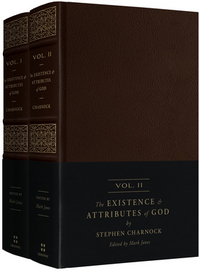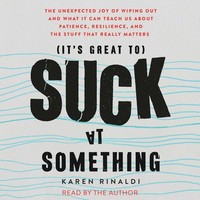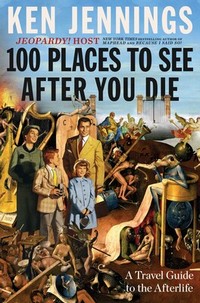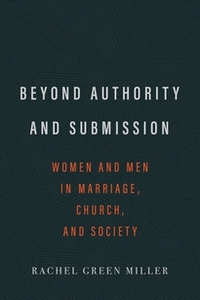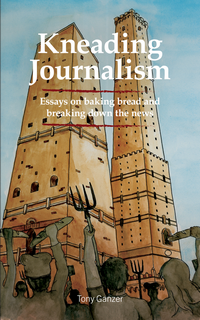Celeste was right, and I don’t have to write about everything—but I have a hard time convincing myself of that. I’m far overdue on saying something about these six listens and one read. So, let’s do a little catch-up (if only so I can feel better about myself). As always, the point of these quick takes posts is to catch up on my “To Write About” stack—emphasizing pithiness, not thoroughness.
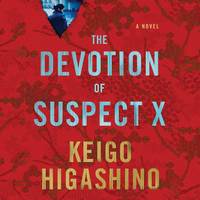 The Devotion of Suspect X
The Devotion of Suspect X
by Keigo Higashino, Alexander O. Smith (Translator), David Pittu (Narrator)
DETAILS: Series: Detective Galileo, #1 (in English, anyway) Publisher: Macmillan Audio Publication Date: Feb 1, 2011 Format: Unabridged Audiobook Length: 9 hr., 2 min. Read Date: March 7-9, 2023 Buy from Bookshop.org!
(the official blurb)
A homicide detective consults with his friend, a genius and physicist about a tricky murder. His friend may be a college professor and not a detective, but there’s something about the way his mind works that helps Detective Kusanagi think better, and consulting his friend has worked in the past.
This is the murder of a seemingly odious man and it seems tied to his ex-wife, who’d been avoiding his abusive presence for years. Kusanagi can’t tie her to the killing, but there’s something going on that makes him want to. So he keeps investigating and then his pal gets involved, too.
This was a perfectly satisfying read, but I wasn’t as wowed by it as I expected to be. Sorry, Jeff, still appreciate the recommendation.

![]()
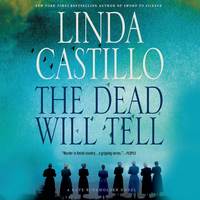 The Dead Will Tell
The Dead Will Tell
by Linda Castillo, Kathleen McInerney (Narrator)
DETAILS: Series: Kate Burkholder, #6 Publisher: Macmillan Audio Publication Date: July 8, 2014 Format: Unabridged Audiobook Length: 8 hrs., 37 min. Read Date: March 10-14, 2023 Buy from Bookshop.org!
(the official blurb)
A pair of apparent suicides gets Kate Burkholder to dive into their pasts, and she discovers a common tie—to a 35-year-old murder of an Amish family. This puts her in a race against time to discover what’s (or who has) caused their deaths now, and if she can stop anyone else from dying while maybe solving this old horror.
The cold-case nature of this is a nice change of pace, but at the end of the day, it’s a brutal crime against the Amish. I’d just like to see someone else in her community the victim of a crime.
That came out wrongly. But it’d be nice to let this community have even some fictional relief.

![]()
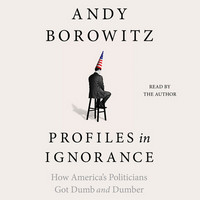 Profiles in Ignorance:
Profiles in Ignorance:
How America’s Politicians Got Dumb and Dumber
DETAILS: Publisher: Simon & Schuster Audio Publication Date: September 13, 2022 Format: Unabridged Audiobook Length: 8 hrs., 51 min. Read Date: March 13-14, 2023 Buy from Bookshop.org!
(the official blurb)
Borowitz traces how mass media and the political parties (particularly one) have worked to dumb down politics, the electorate, and our elected officials since Reagan’s initial run for governor and ending in the present. It’s insightful, it’s depressing, but it leaves a little room for hope.
I really wish he’d done a better job of making this bi-partisan. While he might be right that one party is guilty of more of what he’s talking about, I refuse to believe they’re alone—which makes this feel like too much of a partisan attack, rather than an exploration of the topic. Both have their place—I’d just have preferred a little more of the latter.
I initially assumed that this would be typical Borowitz humor—which I appreciate. But no, this was serious in intent and execution. Earnest Andy Borowitz is an interesting concept. A little humor crept in, but not much. I prefer him when he’s trying to be funny, but I’d read/listen to more like this from him, too.

![]()
 Space: 1969
Space: 1969
by Bill Oakley, starring Natasha Lyonne and too many others to list.
DETAILS: Publisher: Audible Originals Publication Date: 2022 Format: Audible Original Length: 5 hr., 35 min. Read Date: March 29, 2023
(the official blurb)
This is more like an audio play than a book (with all the clunky dialogue that implies). Oh well.
So the premise is that Kennedy survived the Dallas shooting and the space race kicked into overdrive—and by 1969, we have a Moon Colony and a space station. Nancy Kranich is a nurse on the station (with an interesting past), and is pretty miserable, oddly enough. Nancy stumbles into a conspiracy involving an intergalactic threat and former vice-president Nixon (a largely forgotten figure by this time).
Without Natasha Lyonne (and most of the voice cast), I don’t know if I’d have finished this. But because of Lyonne, I’d enjoy relistening to it. It was amusing and strange—feeling like a classic radio SF drama but with some really contemporary sensibilities. I’m not sure it’s the best of both of those worlds, but it was a fun combination.

![]()
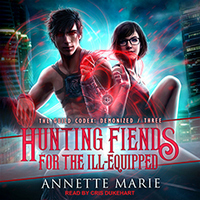 Hunting Fiends for the Ill-Equipped
Hunting Fiends for the Ill-Equipped
by Annette Marie, Cris Dukehart (Narrator)
DETAILS: Series: Guild Codex: Demonized, #3 Publisher: Tantor Audio Publication Date: June 23, 2020 Format: Unabridged Audiobook Length: 8 hrs., 28 min. Read Date: February 1-2, 2023 Buy from Bookshop.org!
(the official blurb)
I’m having trouble remembering just what happened in this one—that’s the case for the entire Demonized arc so far, it’s all one story (which is great for the series, a pain when you’re trying to say “this is the one where…”).
I did enjoy the overall plot of this one, but my favorite parts are where this series overlaps with the other series in The Guild Codex—and I found myself increasingly impatient with Robin as she was off doing her own thing.
I am really tired of the will-they-won’t-they between Zylas and Robin—which is really a how-long-can-Marie-stretch-this-out.

![]()
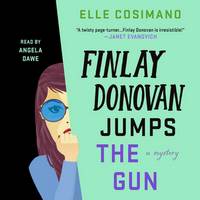 Finlay Donovan Jumps the Gun
Finlay Donovan Jumps the Gun
by Elle Cosimano, Angela Dawe (Narration)
DETAILS: Series: Finlay Donovan, #3 Publisher: Macmillan Audio Publication Date: January 31, 2023 Format: Unabridged Audiobook Length: 8 hrs., 38 min. Read Date: February 9-13, 2023 Buy from Bookshop.org!
(the official blurb)
I am continuing to enjoy this series—but I’m not sure for how long. It’s getting harder and harder to accept the antics that Finlay and Vero get up to—and the way Finlay treats those around her. This book in particular stretched credulity. I fear that Cosimano is learning the wrong lessons from Evanovich.
I’d also like to see Finlay actually do some more parenting—it’s hard to sympathize with her plight when it comes to custody, etc. when she’s always handing off her children’s care to someone else (although, it does keep them safe).
Dawe’s narration is so good that I will put up with a little more zaniness. But without some changes to the series, I’m not sure how long I’ll stick around.

![]()
 Anna and the Vampire Prince
Anna and the Vampire Prince
DETAILS: Series: Anna Strong, #9.5 Publisher: Hex Publishers LLC Publication Date: April 25, 2017 Format: Paperback Length: 92 Read Date: February 17, 2023 Buy from Bookshop.org!
(the official blurb)
Anna’s in France dealing with her mother’s death, and her niece’s death is kidnapped. So she has to reach out to her local allies to try to rescue the girl.
The action bits were Stein at her best but the story felt rushed—but this was largely an excuse to revisit the characters, so it didn’t need to be too involved. As a bit of nostalgia, it was nice—but Stein did a good enough job wrapping up the series that I didn’t feel a giant need for something like this (as demonstrated by the fact that it took me 6 years to get around to reading it).
It was just fun enough to justify my time.

 This post contains affiliate links. If you purchase from any of them, I will get a small commission at no additional cost to you. As always, my opinions are my own.
This post contains affiliate links. If you purchase from any of them, I will get a small commission at no additional cost to you. As always, my opinions are my own.
![]()


